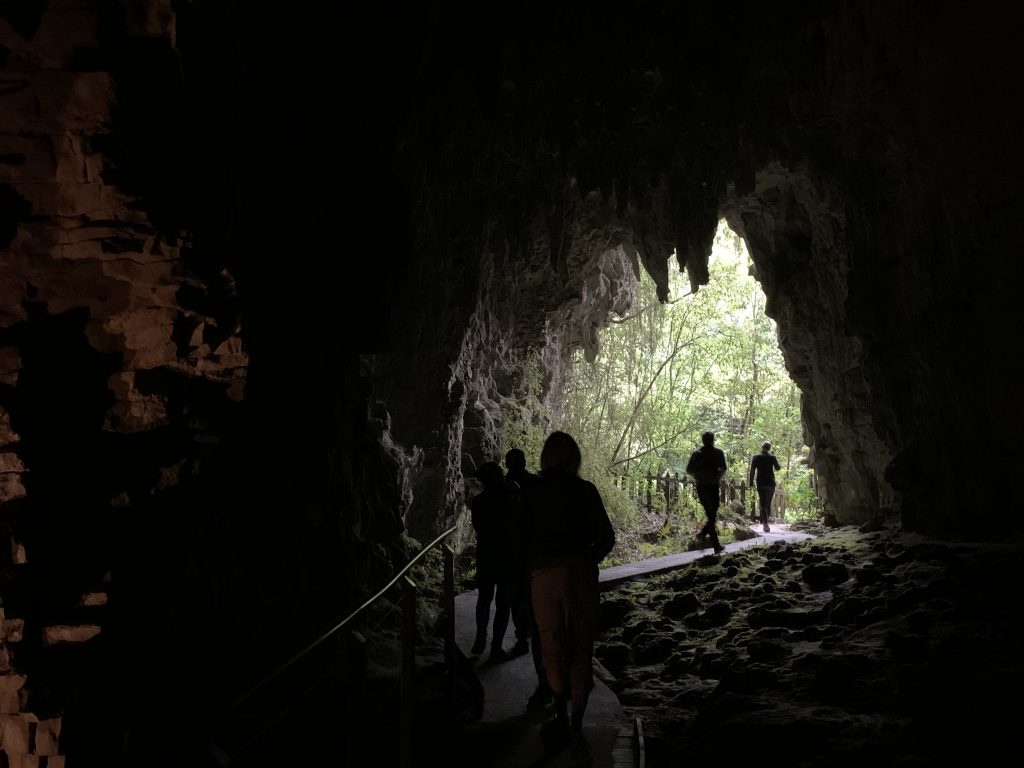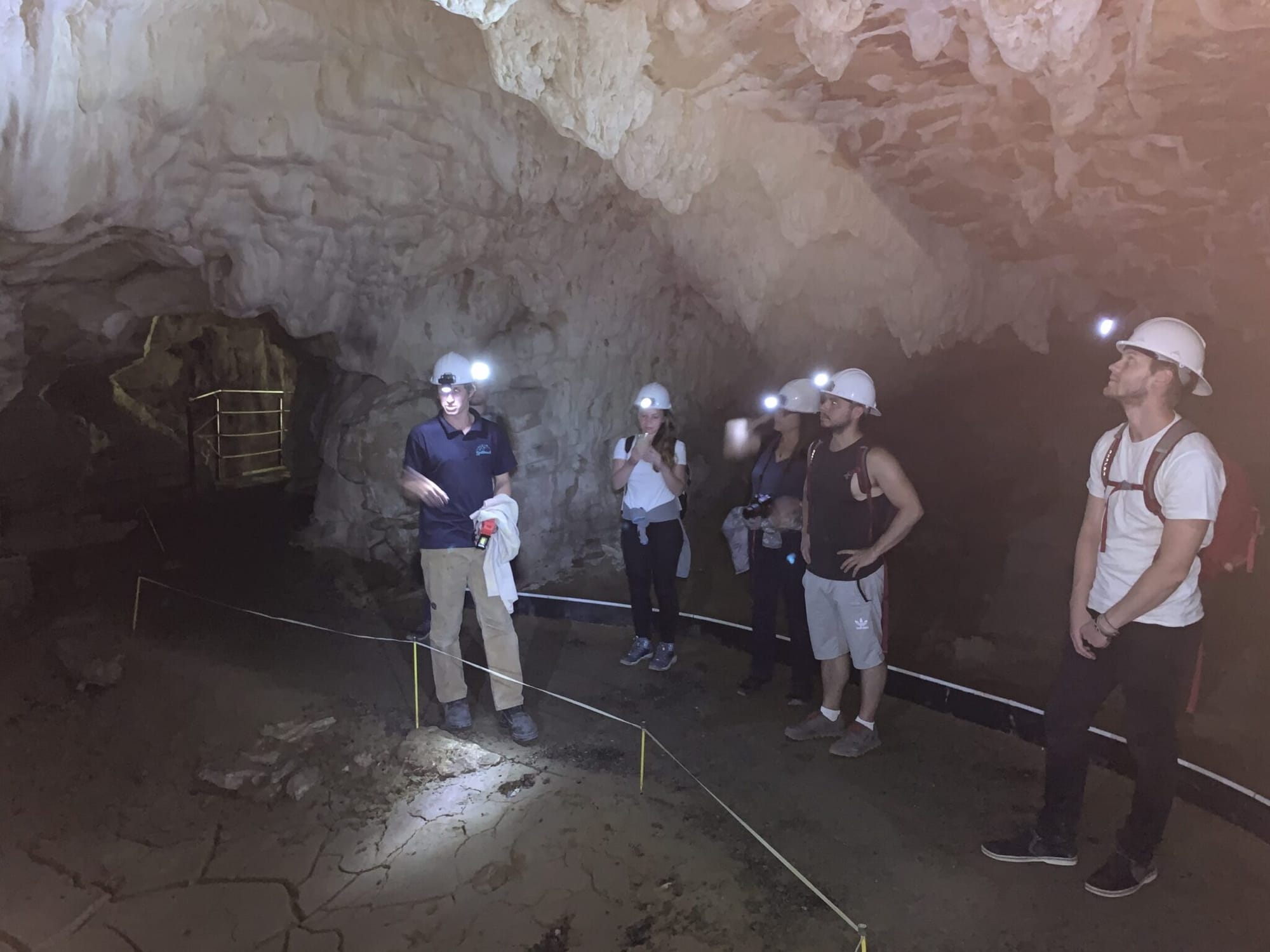
When I first arrived as a new immigrant to what was then immodestly known as “God’s Own Country”, there were far fewer major tourist attractions than there are today. The mud pots of Rotorua bubbled as they still do, Queenstown was a charming village set amongst mind-numbing scenery between

When I first arrived as a new immigrant to what was then immodestly known as “God’s Own Country”, there were far fewer major tourist attractions than there are today. The mud pots of Rotorua bubbled as they still do, Queenstown was a charming village set amongst mind-numbing scenery between lakes and mountains. A variety of tough multi-day hikes awaited the adventurous fan of small biting insects. And then there were — The Waitomo Caves.
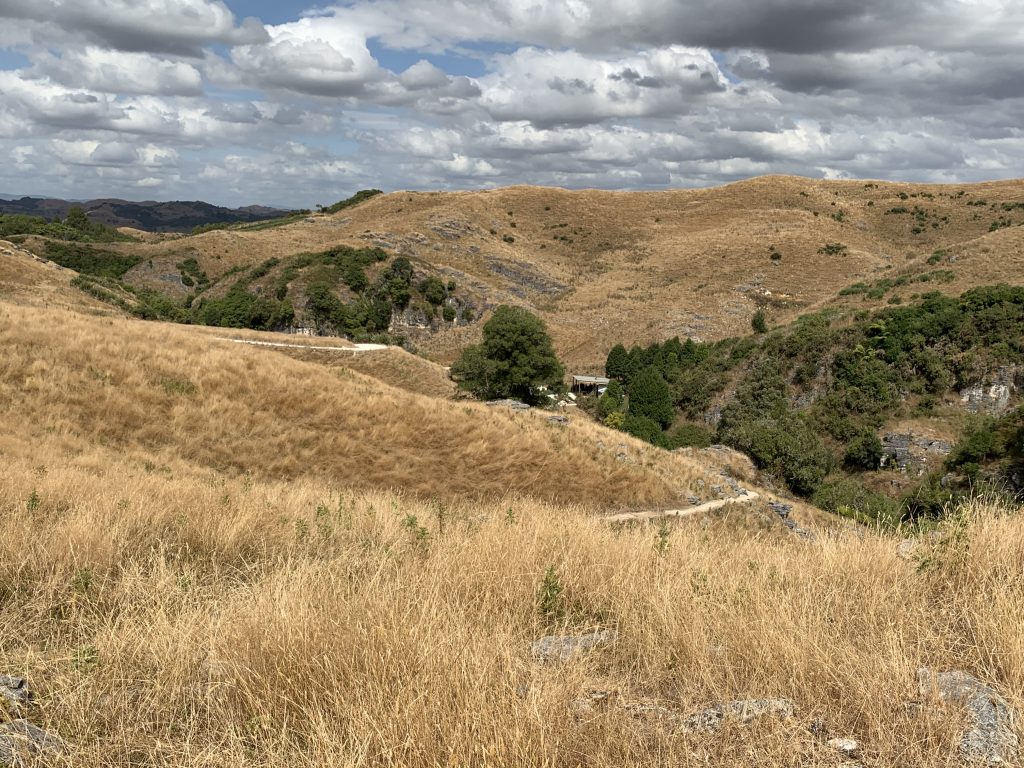
Located in a part of the country that geographers and sociologists agree is best described as “nowhere”, the caves never exerted sufficient appeal to my twenty-something self to merit a visit. “Hey, mates, let’s give the pub a miss and drive ten hours to see some worms hanging off of the roof of a dark cave!”
Yeah, no.
But — in the back of my mind, it bugged me that of all the old school Kiwi tourist attractions, this was the one that had eluded me. Heck, I’d even seen Godfrey Bowen shear a sheep! But had I seen a slimy, glowing worm? Nope.
Then, in February of 2020, opportunity knocked. Mary Anne and I were driving south to meet friends in New Plymouth. There, ideally situated for an overnight stopover, was the tiny settlement of Waitomo Caves.
Back in the day, there was one government-run cave attraction. It’s still going strong. But on the advice of our guest house host, we gave it a miss in favor of a smaller, privately-owned cave. And boy, am I glad we did! As we drove past the original cave, the parking lot was overflowing and the roads were lined with tour buses.
What you want on a cave tour is quiet. Bus tourists are not good at this, particularly tourists from mainland China. Our tour consisted of a dozen people from five or six countries, all of whom were friendly and knew when to keep quiet and appreciate the stillness of the caves.
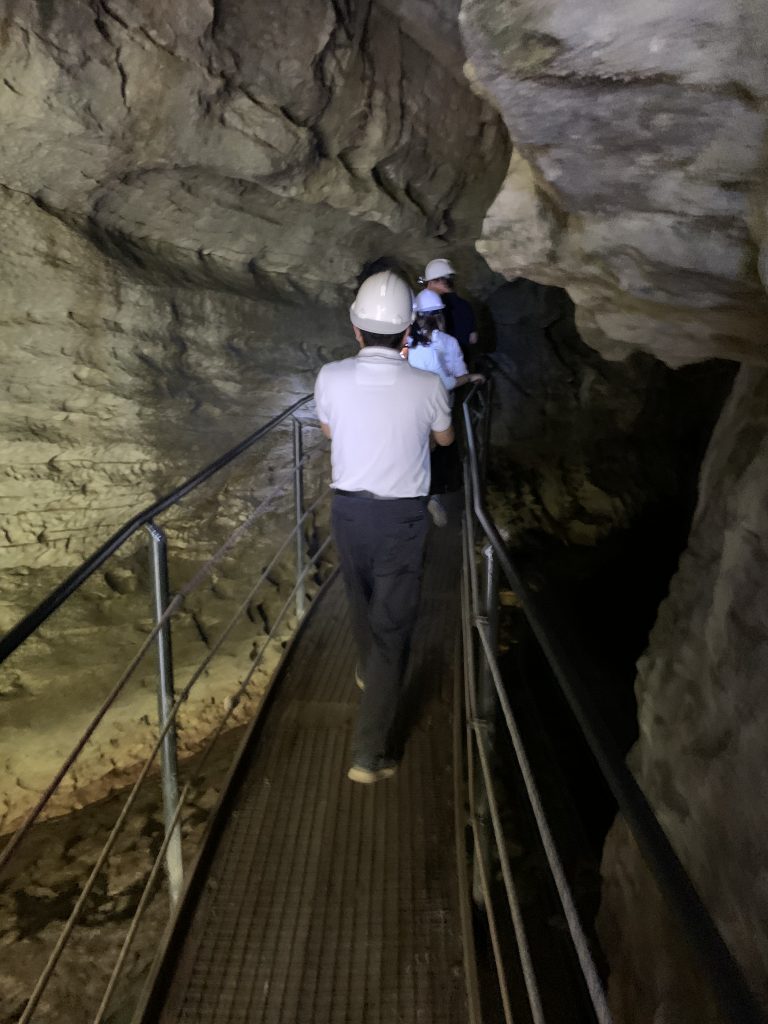
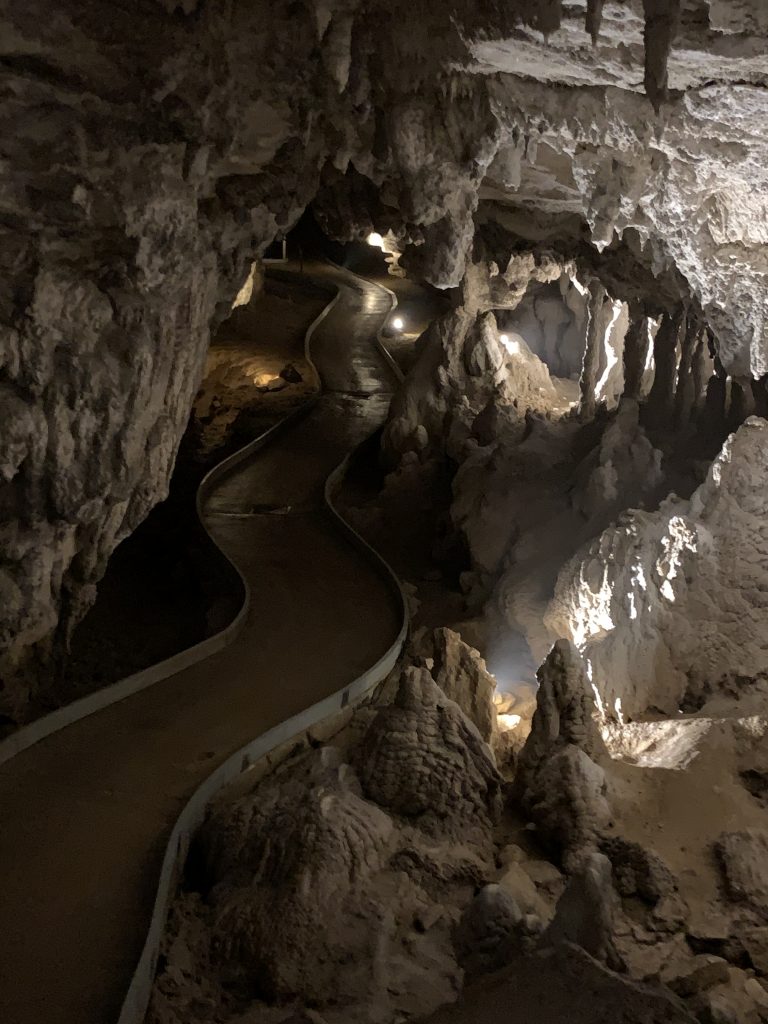

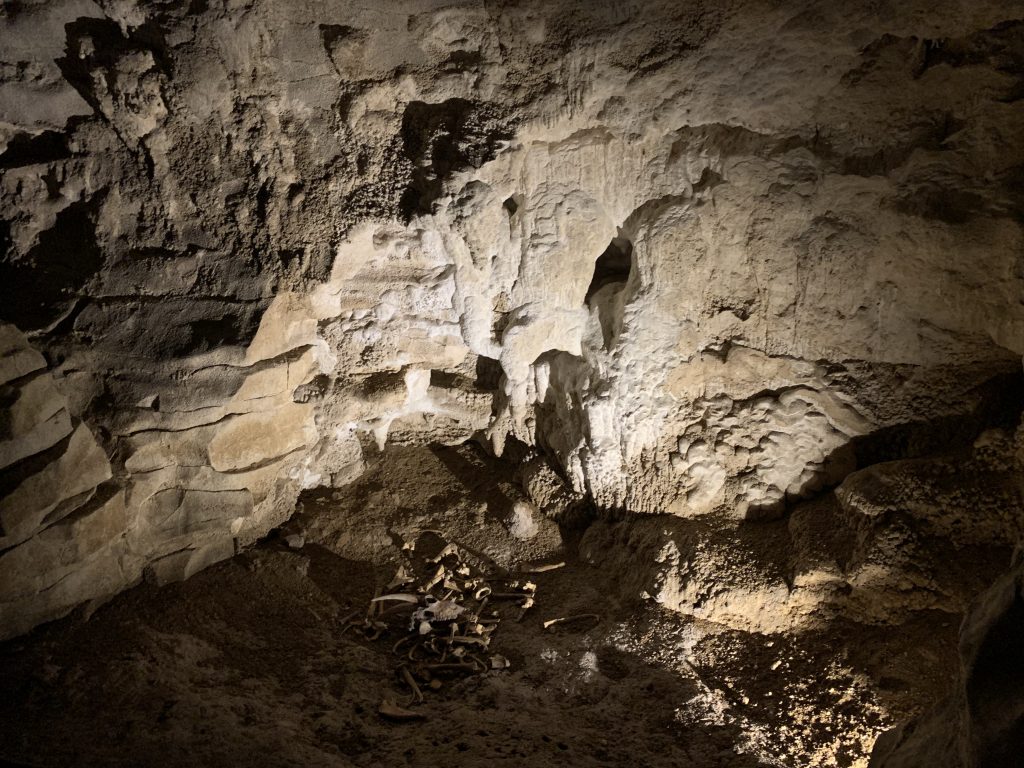
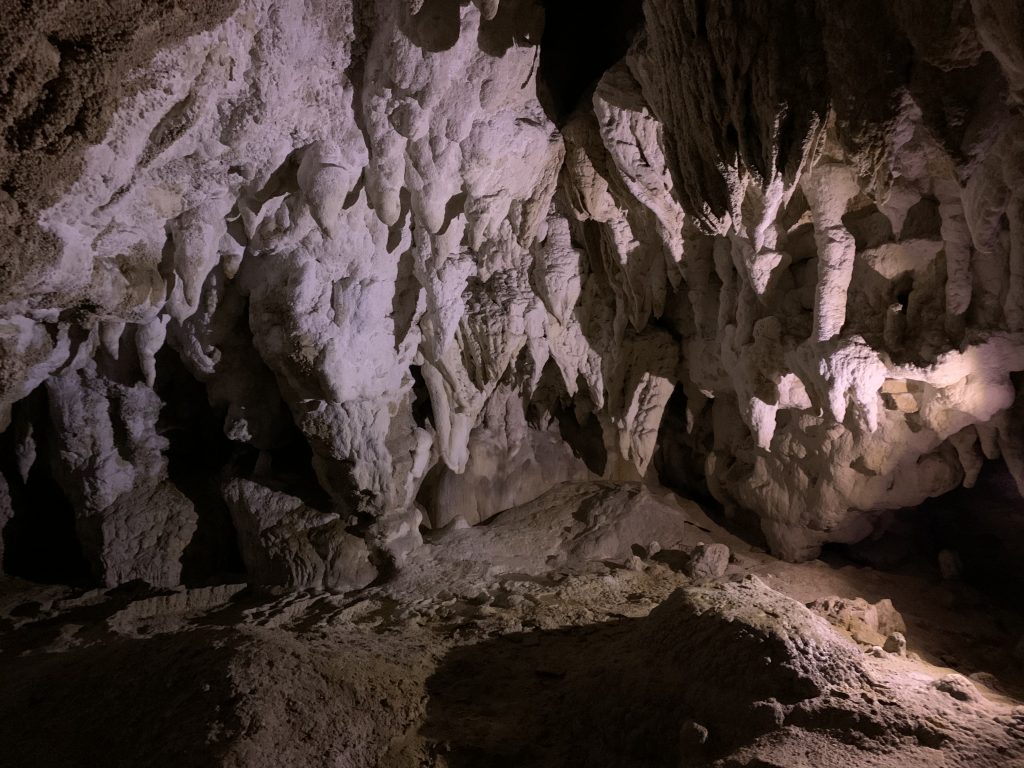
Before we got on the boat, we had a chance to take a look at some worms in better lighting to see how they attract and trap the small flying insects that they feed on.
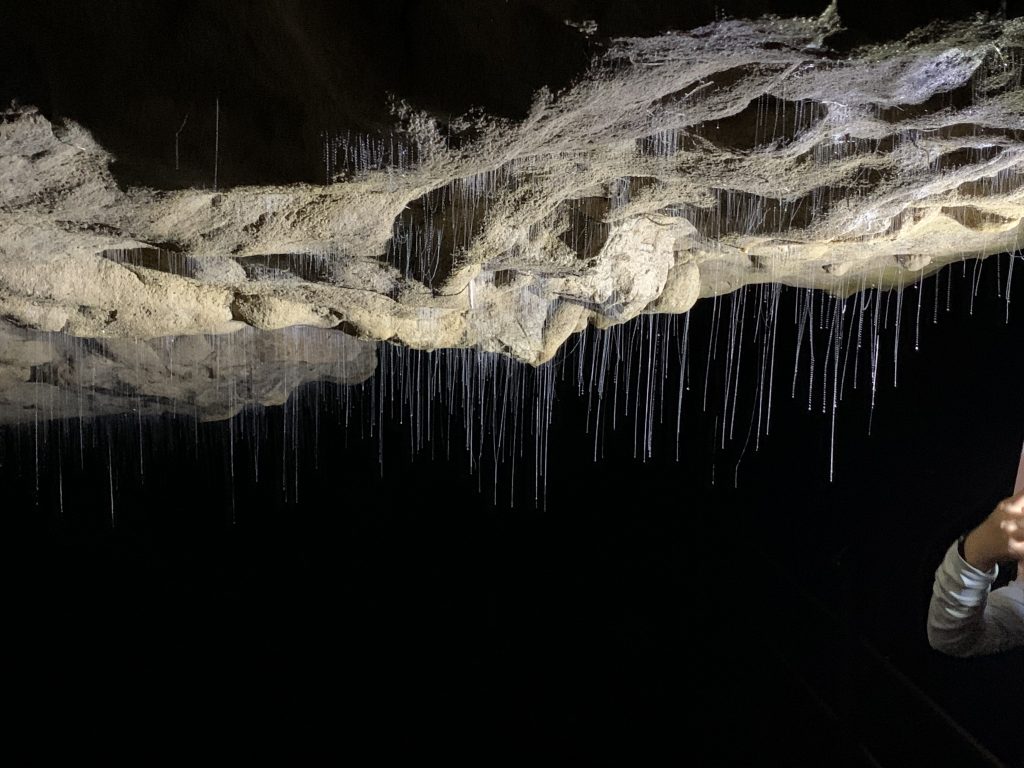
The larvae hang a sticky thread down from their perch to trap prey that are attracted by the worm’s light. When one is caught, the worm draws up the thread and eats whatever got stuck.
This phase of life is pretty good, I guess. Hanging out with your mates, glowing to attract food and hauling it in. What comes next is not so brilliant.
The glow worms emerge from their cocoon phase as small flying insects without a mouth! The rest of their lives can be summarized as follows: breed like crazy before you starve to death.
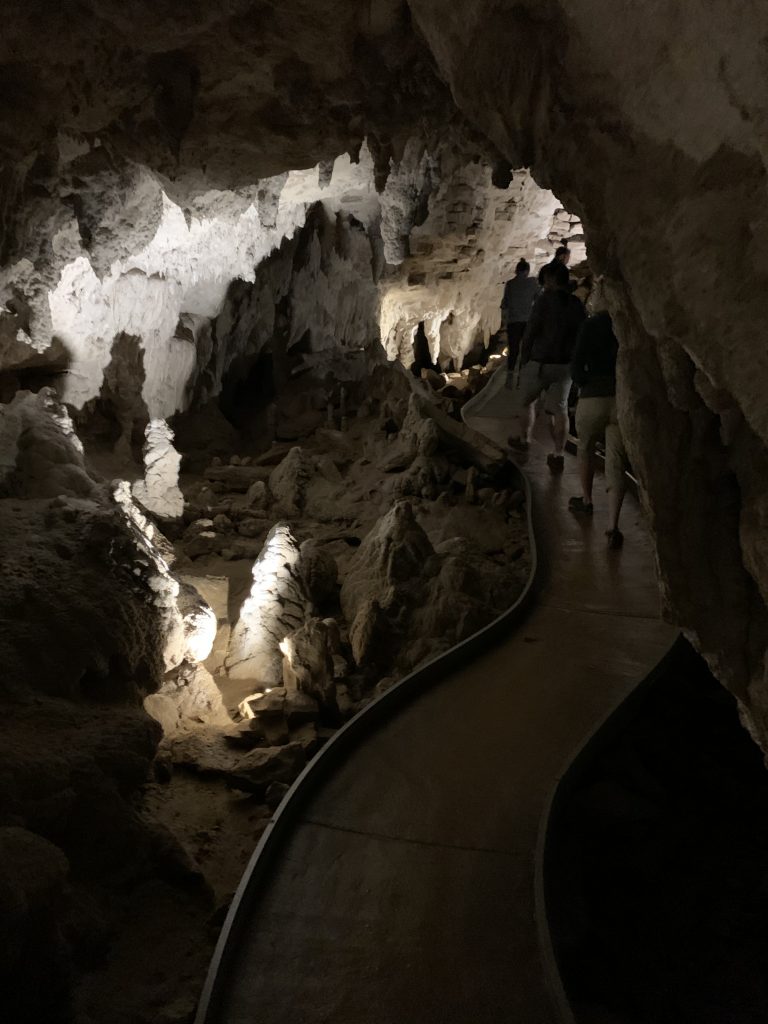
Finally, after a winding walk through the dry part of the cave, we boarded a flat-bottomed boat and floated around in the dark looking at about a squillion glowing worms.
The point of touring an unlit underground cave in a boat, is to see the worms glowing in complete darkness. It’s a fun experience, but doesn’t lend itself to photo documentation.
Have a look at the photos on our tour company’s site.
